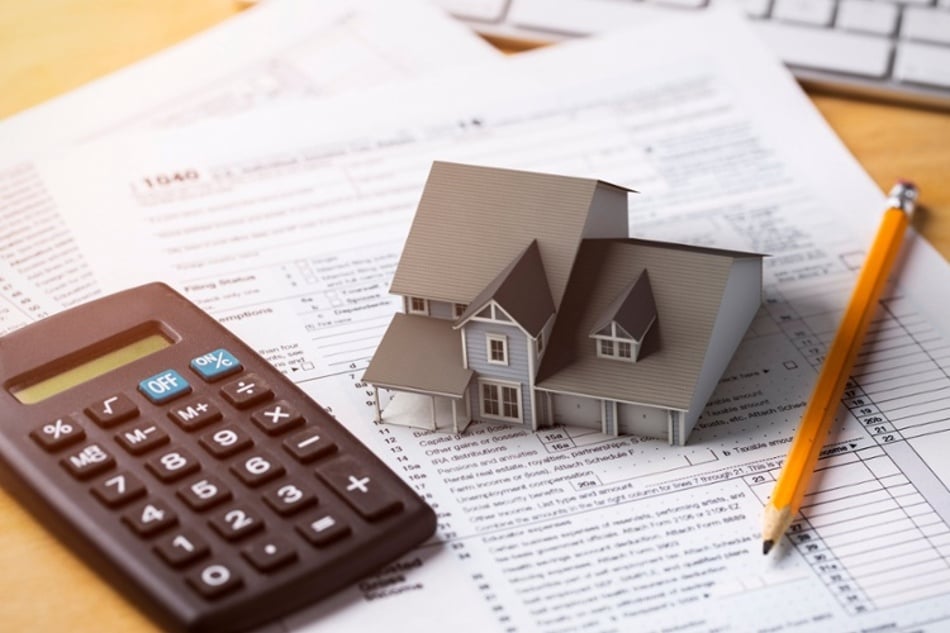One of the most challenging things about investing in real estate is identifying good deals that make the most financial sense. That’s because not all rental properties are created equal.
In order to be a good investment, rental properties have to be in the right place, purchased at the right time, and generate the right amount of income to cash flow.
To help separate potentially profitable investments from ones that may end up losing money, real estate investors run the numbers. Keep reading to understand what numbers real estate investors use, and how to run the numbers on an investment property step-by-step.
Key takeaways
- Rental property numbers include a variety of data points such as purchase price, rental income, vacancy expense, operating expenses, down payment, and mortgage principal and interest payments.
- Some of the numbers investors run on a rental property include net operating income (NOI), cash flow, and cash-on-cash return.
- Online rental calculators are a quick and easy way to run the numbers on a rental property, even if a home has never been rented before.
Numbers every investor needs to know
Let’s begin by listing the types of numbers needed before, well, running the number on a rental property.
By the way, in the real estate business the word “numbers” refer to estimates used to measure the expected financial performance of a real estate investment, such as the various income and expenses, and profits or losses that come with buying and owning investment real estate. While it’s possible to figure out some of these numbers during your due diligence period, you’ll need to use your best estimates while analyzing the property to see if it’s worth making an offer on.
Acquisition costs
There are three types of costs incurred when a rental property is purchased:
- Purchase price: The price paid for the property, regardless of whether or not the property purchase was financed.
- Deductible closing costs: There are 3 types of closing costs that can generally be deducted from rental income the year the property is purchased, according to the IRS – interest, certain mortgage points, and deductible real estate taxes.
- Capitalized closing costs: Other costs incurred when purchasing a residential rental property must be added to the property basis and depreciated over 27.5 years. Additions to the basis include costs of survey and legal fees, recording fees, title insurance, transfer taxes, and charges for installing utility services.
Rental income
Rental income is money received from a tenant in exchange for occupying the home.
In addition to the monthly rent, real estate rental income can also include prepaid rent such as the first and last month of rent, and landlord expenses paid by the tenant in lieu of rent, like painting the house in exchange for a couple of months of free rent.
Refundable security deposits are not treated as rental income, because they are meant to be given back to the tenant when the tenant moves out.
- Monthly income: Rent payment received from the tenant each month, including any applicable late fees if the rent is not paid by the due date.
- Vacancy expense: It’s rare that a rental property is occupied 100% of the time year after year. Vacancy expense is used to off-set the projected rental income. Some investors use a fixed vacancy expense percentage like 5%, while others look at the historical performance of the home if a turnkey rental property is purchased.
As an example, if the projected vacancy rate is 5% and the potential rental income from the property is $18,000 per year (assuming it is always rented), the vacancy expense would be $18,000 x 5% = $900.
Operating expenses
Operating expenses are the costs of owning and operating a rental property. To make keeping track of monthly expenses easier and more accurate, real estate investors can use free financial software like Stessa automate tracking by syncing business bank and mortgage accounts.
While every rental property is different, some of the most common operating expense numbers include:
- Property management fees: Virtual real estate investors often hire a local property management company to take care of the tenants, coordinate repairs with cost-effective vendors, and make sure the property is in compliance with local and state landlord-tenant laws. Property management fees typically run between 8% and 10% of the monthly rent collected.
- Leasing fees: Commissions paid to find a qualified tenant and execute a lease generally equal one month of rent. Fees for renewing a lease with an existing tenant are usually equal to 50-80% of one month of rent.
- Repairs: Even in a brand new rental property with the best tenants, items will need to be repaired from time to time. Typical rental property repairs may include a leaky faucet, running toilet, seasonal service of the heating and cooling system, and pest control to help prevent rodents and termites.
- Insurance: In addition to regular homeowners insurance, investors may obtain a landlord insurance policy to provide extra coverage for property damage, liability if a tenant or guest decides to sue, and loss of rental income if the property is damaged and unrentable for a period of time.
- Property taxes: Also known as real estate taxes, property taxes vary from state to state and are based on the assessed value of the rental property. Property tax rates are as high as 2.13% in a high-tax state like New Jersey, down to 0.37% in a low-tax state like Alabama, according to the Tax Foundation.
- Mortgage payment: The interest rate on a rental property is usually around 0.75% more than the interest rate on an owner-occupied primary residence. Real estate investors break out the cost of property taxes and insurance, so the mortgage payment for a rental property only includes principal and interest.
- HOA fees: If the rental property is in a homeowners association (HOA), monthly and annual fees are treated as normal operating expenses. When buying a rental property in an HOA, investors may wish to request a copy of the HOA’s balance sheet along with the profit and loss statement to learn if there are sufficient funds set aside to pay for capital repairs.
- Capital expenses: A capital expense (CapEx) is money spent on items to improve or better a rental property. Examples of capital expenses include replacing the roof or installing a new HVAC (heating, ventilation, and air conditioning). Many real estate investors deposit part of the monthly rental income into a CapEx account to help ensure the money for capital repairs is there when and if it is needed.
- Utilities: While it’s common for the tenants of a single-family rental ro cover utilities like water, sewer, trash, and electricity, it is more common for apartment owners to cover some or all of these utilities.

How to run the numbers on a rental property
Also known as “back of the napkin” calculations, running the numbers on a rental property helps an investor to understand whether to take a closer look at the home, or take a pass and move on to another prospective deal.
For the purposes of this example we’ll assume the following:
- Property purchase price $120,000
- Down payment $30,000 (25% of purchase price)
- Rental income (after subtracting for vacancy expense) $16,000
- Operating expenses $6,500
- Mortgage payment (principal and interest) $5,200
Now that we know what the numbers are, let’s look at some of the formulas to run on a rental property to measure the potential ROI:
Net operating income
Net operating income (NOI) is calculated by subtracting the operating expenses (excluding the mortgage payment) from the rental income. The mortgage isn’t included because some investors pay all cash, while others may be a higher or lower down payment.
- $16,000 rental income - $6,500 operating expenses = $9,500 NOI
Cap rate
Cap rate (short for capitalization rate) is the percentage return calculated by dividing the NOI by the property purchase price.
- Cap Rate = NOI / Purchase Price
- $9,500 NOI / $120,000 purchase price = 7.9%
Cash flow
Cash flow is the money left over at the end of each period, after all of the rent has been collected and all of the bills have been paid, including the mortgage payment.
Rental Income – Operating Expenses – Mortgage Payment = Cash Flow
- $16,000 rental income - $6,500 operating expenses - $5,200 mortgage payment = $4,300 cash flow
While real estate investors look for positive cash flow, it’s important to understand that cash flow can be negative as well. For example, when a property is first purchased and a tenant needs to be found, vacancy expense and leasing fees may make a rental property cash flow negative for the first month or so.
Cash-on-cash return
Cash-on-cash return compares annual pre-tax cash flow to the cash invested and is expressed as a percentage. If an investor puts $30,000 into a 1-year CD at the going average interest rate of 0.67% (according to Bankrate (Oct. 2021), the cash-on-cash return would be $201.
One of the many reasons why people invest in real estate is to try and generate a meaningful cash-on-cash return. For example, the cash-on-cash return from the rental property in this example would be:
- Cash-on-Cash Return = Annual Pre-tax Cash Flow / Total Cash Invested
- $4,300 annual pre-tax cash flow / $30,000 total cash invested (down payment) = 14.3%
Running the numbers the easy way
A quick and easy way to run the number on a rental property is by using the free rental property analyzer in this article to forecast the potential return of a property. Simply enter some information to view projected key return on investment (ROI) metrics, including cash flow, cash-on-cash return, net operating income, and cap rate.
With the demand for good rental property as strong as it is today, more and more investors are purchasing single-family homes that used to be owner occupied and turning them into rentals.









